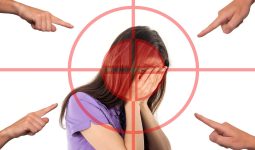Everyone has things that frighten them; in the case of Automatonophobia, it is the ear of any or all human-like figures like dolls, mannequins, robots, statues, puppets, and so on.
The word originated from the Greek words “autos or automatons,” which means self-acting, and “Phobos,” which means fear or avoiding fear.
There is a time when fear of something causes a problem in our daily lives, but someone who has Automatonophobia can experience significant anxiety from being in contact with human-like figures or even just from the thought of it.
Causes of Automatonophobia
There isn’t a concrete fact of the causes of phobias; the same applies to Automatonophobia, but some causes are worth mentioning. These usually have a small or massive factor in the development of Automatonophobia.
Movies have usually been one of the major causes of various phobias. In the case of Automatonophobia, a child might have seen multiple films, such as I-Robot, which depicts the negative role of super-intelligent robots.
These robots were capable of making a decision; part of this decision was the destruction of the human race.
Terminator is another sci-fi movie that shows the domination of robots over humans. A visit to a wax museum, where wax is used to create human figures, such a place could be creepy to someone with a sensitive mind.
Various pranks related to human-like figures might have been played on an individual who might cause a great fear of human-like figures in their adult life.
These are some of the plausible factors that might lead to children developing Automatonophobia in the early stages of their lives.
A combination of genetic tendencies, brain reactions, biological factors, environmental tendencies, and psychological factors can all affect someone and cause them to have Automatonophobia.
Some traits, like a walking pattern, eating mode, and reaction to certain things, are learned or passed down to younger siblings or children.
The same applies to Automatonophobia. It could be passed down to the younger ones in the house, or they could learn this fear just by observing the way their family members react to the object.
Stress and Depression are a significant factor in the development of various phobias. If someone with high stress and depression levels is left untreated, they might grow to develop Automatonophobia over a long period of time.
Symptoms of Automatonophobia
The effect of Automatonophobia on people depends on the severity of the disorder, and how easy it is to avoid that which frightens them.
To lower the effect of Automatonophobia, many who suffer from the illness go to great lengths to avoid places where various human-like figures might be present, such as malls with numerous mannequins, a museum with multiple human waxed figures, or movie theatres.
All these places are capable of causing fear for people who have Automatonophobia, so they try their hardest to avoid such situations.
One can see that Automatonophobia can affect their daily lives and daily routines, reduce work efficiency and self-esteem, and many others among those who suffer from this illness.
Some other symptoms of Automatonophobia include;
- Sweaty palms
- Racing heart
- Falling out of touch with reality
- Feeling dizzy, choky, lightheadedness, etc
- Cold or hot flushes
- The thought of death or dying
- Chest pain
- Shortness of breath or feelings of suffocation
- Nausea or vomiting
- Trembling and shaking
Automatonophobia can display all kinds of symptoms in different patients. Just the thought of the objects or encountering these objects of fear could cause anxiety and severe panic attacks for different people on different occasions.
It could be alarming and very embarrassing for people who have Automatonophobia, so they try to avoid the cause of their panic in most cases.
However, there is not always the best option, as they only acknowledge that the fear of human figures is real.
Although avoiding them is not always easy, relationships are broken, and daily life is affected.
Treatment for Automatonophobia
Treatments for Automatonophobia might include some Talk Therapy like Cognitive-behavioural (CBT), or Exposure therapy.
Exposure therapy is seen as one of the most common forms of treatment for those who are suffering from various phobias, including Automatonophobia.
Below is a list of treatments that might have helped those who are suffering from Automatonophobia
Exposure Therapy
Exposure therapy is a pervasive way of treating various forms of phobia. Exposure therapy works well for most patients suffering from phobias, including Automatonophobia.
Its procedure is quite adequate, as people with Automatonophobia are gradually made to put themselves in various positions where they find themselves in the midst of human-like figures and learning to cope with their fears while in that state.
The patient might have to be in a room with a mannequin. The patient would be made to remain there for an amount of time.
If the phobic develops the confidence to be in the presence of a mannequin, he might advance to a more fear striking form of treatment.
In the course of treatment of Automatonophobia, the Doctor might start the procedure by showing pictures of various figures like statues, dolls, mannequin to the patient; after some time, he might also have to introduce said patients to a video of these figures.
This is seen as one of the best ways of treating Automatonophobia, so Doctors use this mode of treatment more.
Cognitive Behavioral Therapy (CBT)
Cognitive-behavioural therapy is another mode of treatment that is very helpful in treating those with Automatonophobia.
It’s an option that focuses on changing the negative thoughts that people who have Automatonophobia, to healthier ones.
This treatment is known to help them improve their lifestyle. Phobias can cause visible activation and changes in neural pathways of the brain.
Through research in 2013, studies have found that CBT has a significant impact on people who have specific phobias, such as Automatonophobia.
Some medications for those with Automatonophobia include;
D-cycloserine (DCS)
This is a drug that is said to help exposure therapy work well. A result in a 2017 review afforms this claim.
Beta-blockers
Beta-blockers are a medication that helps with physical symptoms of anxiety. Increased heart rate and dizziness, among others, are some physical symptoms Beta-blockers treat. They are used before a situation that might trigger the physical symptoms.
Benzodiazepines
These are some forms of sedative that help to decrease anxiety symptoms in patients. These medications could be very addictive; this is one of its downsize, so it is usually used occasionally and as prescribed by the Doctor.
Support Groups
This is a form of treatment where people suffering from all kinds of phobias, anxiety, or stress-related problems go to find a solution to their worries.
Sharing one’s experience with other people helps them to know that they are not alone and might be able to overcome their fears. There are various offline and online support groups.








